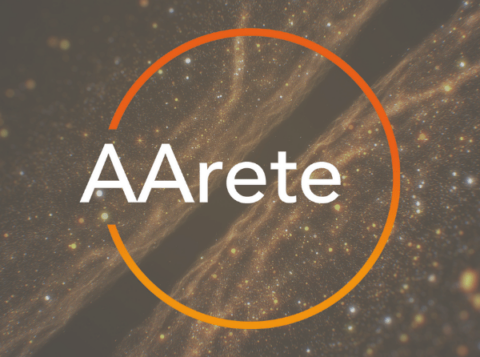How to Measure Your Company’s Carbon Footprint
This is an AArete Profitability Improvement insight
Environmental, Social, and Governance (ESG) disclosures are quickly becoming a reporting requirement for many businesses, which is why understanding how to identify and measure the carbon footprint of your company, particularly if you have an operational supply chain, is critical for sustainable growth. In addition, adhering to greenhouse gas protocols has a number of benefits for your organization, including: 1) Meeting stakeholder requirements, 2) upholding your social responsibility as an organization to combat our climate crisis, 3) appealing to your customer base for reputational gains, and 4) reducing costs through improved processes and ongoing operations.
However, despite these requirements and benefits, some organizations face ongoing challenges with ESG data collection and reporting due to data complexity, acquiring qualified data and verification, scaling with the company’s goals, and securing leadership buy-in. Thankfully, new technology and software solutions are available to improve your emissions data and reporting to help your company monitor its progress toward Net Zero, which we’ll explain in more detail below.
Throughout this guide, you’ll discover:
- What Contributes to the Carbon Footprint of a Company?
- What Is the Impact of Scope 1, 2, and 3 Emissions?
- Key Components Needed for Measurement
- Software Solution to Help You Accurately and Easily Measure GHG Emissions
- How to Implement Your Chosen Solution
- How to Reduce Scope 1, 2, and 3 Emissions
- How Other Companies Have Reached Net Zero After Software Implementation

What Contributes to the Carbon Footprint of a Company?
A company’s carbon footprint is its total amount of greenhouse gas emissions (including carbon dioxide and methane) generated by its operations. These carbon emissions are categorized into Scope 1, 2, and 3 emissions to help companies calculate all direct and indirect emission factors.
This can include direct emission sources like fossil fuel consumption from owned company vehicles to the chemical reactions that can occur during manufacturing, and much more. It also considers indirect emissions from energy consumption used to power everyday operations like electricity, steam, and heating and cooling—not to mention indirect value chain emissions in 15 defined categories.
Learn more about the differences between Scope 1, 2, and 3 emissions
What Is the Impact of Scope 1, 2, and 3 Emissions?
Emissions can impact our environment, your total operational costs, and even your reputation as a company, but each one may vary by your unique circumstances and region. Here is a breakdown of emission categories by impacted area:
Environment: Scope 1, 2, and 3 emissions contribute to total greenhouse gas emissions, which impact our environment in a number of ways, including: climate change and global warming, extreme weather patterns, our oceans, human health, and more. The largest contributor to a business’s carbon footprint, globally, is electricity and heat production, which are considered Scope 2.
Operational Costs: Not only can each of these categories contribute to your environmental impact as a company, but minimizing your CO2 emissions can actually help you decrease operational costs and save money. We’ll share more details below about an institution in higher education that was able to reduce spending after calculating their CO2es by category.
Reputational Gains: Companies aren’t the only ones trying to find carbon offsets to reduce their footprint. Some consumers are working at an individual level to minimize their emissions in their day-to-day lives, which includes the products and services they choose to buy and the brands they want to support. Companies that embrace a sustainable future help both the environment and their reputation.
Key Components Needed for Measurement
There are a few key components needed to accurately measure Scope 1, 2, and 3 emissions against GHG protocols, which include:

- Measurement and reporting goals for business activities
- List of all owned or controlled assets
- Utility bills for every company location
- Receipts for any fuel purchased outside of utilities
- Procurement data of goods and services
- Spend data of business travel
- Additional data like employee commuting data, investment data, onsight solar, and any renewable energy credits the company has purchased
- Advanced measurement tool with a carbon calculator to streamline data collection and improve analysis
Learn more about ESG reporting best practices
Software Solution to Help You Accurately & Easily Measure GHG Emissions
Measuring your business carbon footprint can be a complex and time-consuming process. Our AAchieve.ESG sustainability management software combines AI technology and our consulting expertise to signficantly streamline measurements and reporting.
As an example, we once assisted a university in scaling back their measurement and reporting process of their Scope 3 emissions from 6 months to less than 1. In just 2 weeks, our platform was able to take their data and turn around insights. The accuracy of the information was confirmed by the university’s sustainability institute and directly applied to their sustainability efforts.
When researching a suitable software, consider if they have essential features like data tracking, analytics, report generation, and integration capabilities for optimal tracking and insights. With our software, clients can enable cross-industry reporting to measure, manage, and report on environmental data in record time.
How to Use Your Chosen Solution for Carbon Footprint Calculations and Analysis
Once you’ve selected a platform to help you automate emissions reporting, it’s time to integrate your chosen system with current data points. Often, a system expert can assist you with installation and configurations so your goals and the appropriate metrics are set up correctly.
From there, you will be able to see data inputs to accurately measure your footprint calculations. These can sometimes be difficult to interpret, no matter how intuitive the platform, which is why our digital transformation and sustainability experts at AArete remain in contact with our clients to analyze results so they can inform next steps.
Calculation Requirements
To properly integrate AAchieve.ESG or another carbon emissions measurement platform, you will need the following information depending on the methodology you follow:
Spend-Based: A spend-based approach means to calculate your emissions, you will need to know the total cost of goods or services used to operate your business throughout the year so you can then apply the environmentally-extended input output (EEIO) factors, which estimate GHG emissions resulting from production and upstream supply chain activities of different sectors and products within an economy.
Using AAchieve.ESG, we can get a strong estimate of emissions in as little as 2-4 weeks using widely accepted global standards. We just request certain data from your team in the form of spreadsheets, invoices, or pdfs that we then input into our platform to provide you with needed reporting insights. Long-term, our custom data engineering team helps connect any procurement, HR, or utilities software to our platform to seamlessly collect up-to-date data calculations moving forward.
Primary Data Capture: This approach relies on data provided by your supply chain partners. While this may lead to more accuracy, it is difficult to gain access to everything you need through your partners.
Following these automation requirements for data collection, consolidation, and reporting through your chosen platform, you can greatly improve the efficiency and accuracy of your ongoing reports and strategies.
Learn more about these methodologies and the importance of automation
Setting Up Reports by Scope
Scope 1 and 2 are usually the simplest to set up as you look at business expenditures. It’s the Scope 3 emission reporting that presents more challenges. With 15 total categories of Scope 3 emissions deriving from the company’s value chain, this is the most complex category of your carbon accounting calculations. This category often contributes to your highest emission hotspots and requires the greatest strategic focus for carbon reduction, which is why it’s such a critical component of emissions reporting.
With tools like AAchieve.ESG, you can make a once-complicated and impossible task so much simpler. And with most carbon accounting reporting becoming a compliance obligation in the coming years, our platform can help you achieve reporting requirements while adapting to evolving standards. Discover how to identify your Scope 3 emissions so you can accurately set up reporting.
Learn more about how to identify and measure Scope 3 emissions categories
How to Reduce Scope 1, 2, and 3 Emissions
Once you have implemented sustainability software to automate carbon emission reporting, whether you are a small business or a large one, you can begin to take action to reduce your Scope 1, 2, and 3 emissions. We recommend:
- Setting realistic sustainability goals and track your progress using your chosen software
- Working with a sustainability expert to help you interpret the data and inform next steps
- Minimizing waste and energy consumption where needed based on the data
- Demanding accurate GHG emissions reporting from your supply chain partners to understand your total impact
Learn more about how to rethink your supplier plan - Implementing a sustainable procurement strategy through company policy, purchasing decisions, and your Scope 3 emissions
Learn more about a sustainable procurement strategy - Ongoing reporting and management to continue to work toward a sustainable future.
How Other Companies Have Reduced Environmental Impact after Software Implementation
One of the many benefits of software implementation is the ability to see your company’s entire life cycle throughout all three scopes to make strides toward a sustainable future. Below are two case studies that showcase the benefits two higher education institutions uncovered after using AAchieve.ESG to meet their sustainability goals.
Higher Education Institution Reaches Net Zero Using AAchieve.ESG
We helped a higher education institution achieve net zero by integrating Scope 3 emissions management into their operational strategy. Here are the steps we followed to reach their goal:
- Situation: The university was experiencing high emissions but was unsure which categories and suppliers they were coming from. They needed support identifying the sources of emissions so they could take action.
- Approach: We integrated and configured AAchieve.ESG on their behalf to analyze a year of their spending data and determine where sources of high emissions came from.
- Results: The data from AAchieve.ESG revealed that facilities, IT, and professional services were significant contributors to their carbon footprint. By understanding the sources of emissions, we developed a roadmap for them to reach net zero, identifying benchmarks and establishing ongoing reporting. This helped them move forward with a strategic approach to reducing their emissions and aligning with their suppliers on sustainability goals.
Learn more about how this institution reached net zero
Private University Achieves Cost Savings and Reputational Gains Through Transportation Optimization
Another institution in higher education achieved cost savings and reputational gains using AAchieve.ESG. Read more about their journey:
- Situation: Private university saw a need for assessment of current transportation services (student commuting shuttles, faculty mobility, staff vehicles). In conjunction with our software solution, we helped them craft inventive solutions to reduce expenses and augment service levels, aligning with university values and educational goals.
- Approach: We used results generated by AAchieve.ESG to help the university move toward an on-demand model of transportation instead of a fixed schedule system. They also decided to upgrade their vehicles to be powered by natural gas.
- Results: What the university saw from the changes they made based on the data was a drastic reduction in wait times, enhanced service to their students and staff, impressive cost reduction, greenhouse gas emissions reduction, a healthier campus environment and an improved reputation.
Learn more about their sustainability learnings and achievements
Request a Demo of AAchieve.ESG
Let us demonstrate the simplicity and impact that AAchieve.ESG can bring to your emissions data capture and reporting. With AAchieve.ESG you can start to:
- Automate & streamline your data
- Demonstrate your impact
- Gain actionable improvement recommendations
- Prepare for third-party assessments with SEC- and GRI-compliant reports


















































































































